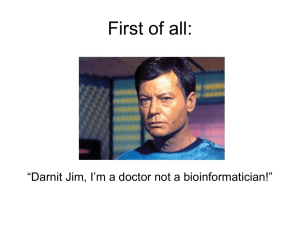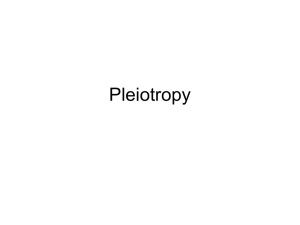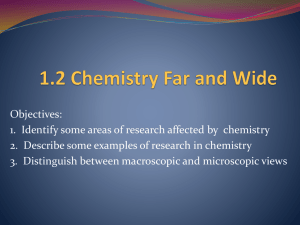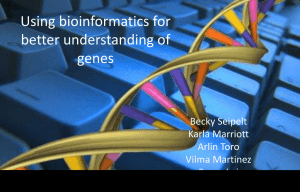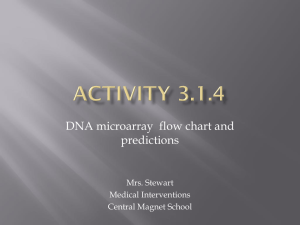Gene duplication
advertisement
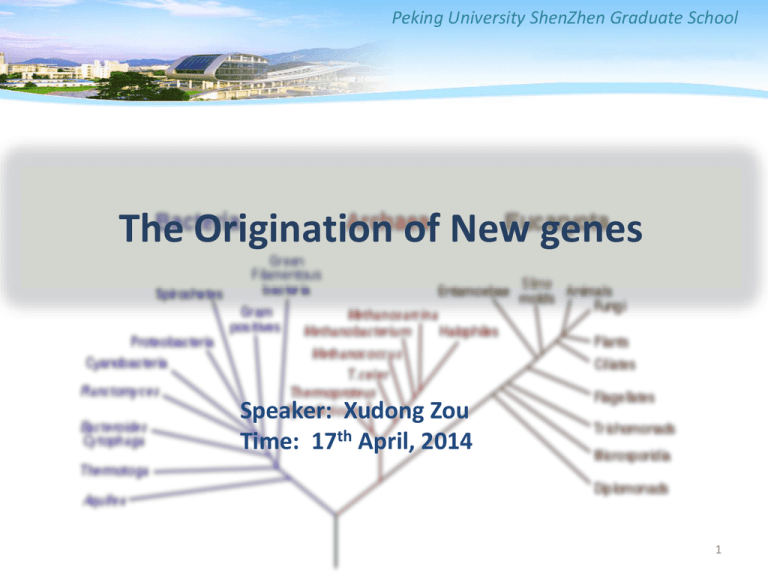
Peking University ShenZhen Graduate School The Origination of New genes Speaker: Xudong Zou Time: 17th April, 2014 1 Outline Background Molecular mechanisms Exon shuffling Gene duplication Lateral gene transfer Gene fusion/fission De novo gene origination Summary 2 Outline Background Molecular mechanisms Exon shuffling Gene duplication Lateral gene transfer Gene fusion/fission De novo gene origination Summary 3 The legend of Jingwei In an ancient Chinese legend, the first Chinese emperor Yande (3,000 BC) brother to the YellowEmperor, had a pretty princess named Jingwei. Like other legendary southern Chinese goddesses, Jingwei liked to swim. Unfortunately, she drowned in the East China Sea. She was reincarnated into a beautiful bird, who, to save others from possible tragedy, carried soil and stones in an attempt to fill in the ocean. 4 Manyuan Long and the Jingwei gene Manyuan Long Department of Ecology & Evolution Biological Sciences Collegiate Division University of Chicago Jingwei The first young gene described in the early 1990s. It is a very young gene that if we set 1 million years as an age unit, the common old genes are often 1000~3000 years old, while Jingwei is 2 years old. 5 1950s-In 1953, DNA double helix In 1966, Richard Lewontin and Huby found that natural selection can’t explain molecular evolution In 1968, Motoo Kimura introducing neutral theory of molecular evolution 1990s-In 1993, Manyuan Long described the Jingwei gene, open a new field to study the origination and evolution of new genes 6 In 1990, Manyuan Long joined Langley’s lab and investigated degree of fitness of neutral theory on DNA. CHARLES H. LANGLEY Michael Ashburner told that gene Adh of D. melanogaster was a pseudogene. Long found that almost all of the mutation occur at the third site of a codon. Means it may be a real gene rather than a pseudogene. Long confirmed the complex processes of the origination of this gene and named it Jingwei. 7 Outline Background Molecular mechanisms Exon shuffling Gene duplication Lateral gene transfer Gene fusion/fission De novo gene origination Summary 8 Exon shuffling Two or more exons from different genes can be brought together ectopically, often mediated by transposons, or the same exons can be duplicated to create new exonintron structure. Transposon: Long interspersed element(LINE) Helitron Long-terminal repeat retrotransposons Examples: fucosyltransferase, jingwei, Tre2 Long MY, et al. Nat Rev Gent. 2003 9 Exon shuffling Origination of jingwei from the following two genes: Yellow-emperor Adh: a pseudogene Sphinx structure Long MY, Science. 1993 Long MY, et al. Nat Rev Gent. 2003 10 Gene duplication This classical model creates a duplicate gene that can evolve new functions, whereas the ancestral copy maintain its original functions. New duplicated genes under positive selection and evolve new functions Examples: CGβ, Cid, RNASE1B Gene duplication may be three variable tpyes: Complete gene duplication, partial gene duplication and dispersed gene duplication. Long MY, et al. Nat Rev Gent. 2003 Cardoso-Moreira M and Long MY. 2004 11 Gene duplication RNASE1 and RNASE1B were generated by recent duplication from other old world monkey. RNASE1 has not changed since duplication, while RNASE1B accumulated many substitutions. The ability to digesting double-strand RNA of RNASE1, lost in RNASE1B Zhang J, et al. Nature Genet. 2002 12 Lateral gene transfer Lateral gene transfer is the gene tranferred between different organisms. Often in Prokaryotes, rare in eukaryotes. Examples: acytylneuraminate lysase, Escherichia coli, mutU and mutS Long MY, et al. Nat Rev Gent. 2003 Cardoso-Moreira M and Long MY. 2004 13 Gene fusion/fission Two adjacent genes can fuse into a single gene or a single gene can split into two single genes by mutations on stop codon or initial codon. Examples: Fatty-acid synthesis enzymes, Kua-UEV, Sdic Long MY, et al. Nat Rev Gent. 2003 14 De novo origination De novo genes refer to events, where a coding region originates from a previously non-coding region. Examples: AFGPs, BC1RNA, BC200RNA Long MY, et al. Nat Rev Gent. 2003 Cardoso-Moreira M and Long MY. 2004 15 Outline Background Molecular mechanisms Exon shuffling Gene duplication Lateral gene transfer Gene fusion/fission De novo gene origination Summary 16 Long MY, et al. Nat Rev Gent. 2003 17

